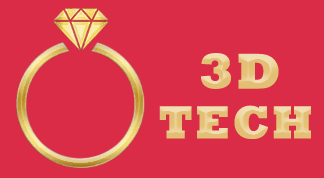
Visuals or diagrams illustrating the CAD to CAM workflow for added clarity
1. Flowchart of the CAD to CAM Process
Description: A simple flowchart can visually represent the steps from design to production.
- Start: Conceptual Design
- Step 1: CAD Modeling
- Software: (e.g., Rhino, MatrixGold)
- Step 2: Design Review and Modifications
- Step 3: Export CAD File
- Formats: STL, OBJ, etc.
- Step 4: Import to CAM Software
- Software: (e.g., Mastercam, Fusion 360)
- Step 5: Toolpath Generation
- Step 6: Manufacturing
- Machines: CNC, 3D Printers
- End: Final Product
2. Comparison Chart of CAD and CAM Software Features
Description: A table comparing the key features of popular CAD and CAM software used in jewelry design.
| Software | Key Features | Best For |
|---|---|---|
| Rhino | NURBS modeling, plugins | Complex designs |
| MatrixGold | Jewelry-specific tools | Custom pieces |
| SolidWorks | Parametric design, simulation | Mechanical jewelry |
| Tinkercad | User-friendly, basic models | Beginners |
| Mastercam | Toolpath generation | CNC machining |
| EnvisionTEC | 3D printing, high resolution | Prototyping |
3. Step-by-Step Visual Guide
Description: Create a series of images or icons to illustrate each step in the CAD to CAM process.
- Image 1: A designer sketching ideas (Conceptual Design)
- Image 2: A screenshot of CAD software with a jewelry design open (CAD Modeling)
- Image 3: An image of a designer reviewing the model (Design Review)
- Image 4: An icon representing file export (Export CAD File)
- Image 5: Screenshot of CAM software with toolpaths (Import to CAM)
- Image 6: A CNC machine or 3D printer in action (Manufacturing)
- Image 7: A final piece of jewelry (Final Product)
4. Diagram of Tools and Equipment
Description: Create a diagram showing the different tools and machines used in the workflow.
- CAD Software Section: Include logos of software like Rhino, MatrixGold, etc.
- CAM Machinery Section: Icons or images of CNC machines, 3D printers, and laser cutters.
- Materials Section: Showcase the types of materials that can be processed (e.g., metal, resin).
5. Infographic on Benefits of CAD and CAM
Description: An infographic highlighting the advantages of using CAD and CAM in jewelry design.
- Section 1: Enhanced Creativity
- Section 2: Precision and Accuracy
- Section 3: Increased Efficiency
- Section 4: Consistency in Production
- Section 5: Cost-Effectiveness
Conclusion
Using these visual aids can significantly enhance the understanding of the CAD to CAM workflow in jewelry design. They help break down complex processes into digestible parts, making the information more accessible and engaging for your audience. If you have design software or tools like Canva, Adobe Illustrator, or even PowerPoint, you can easily create these visuals based on the descriptions provided! Let me know if you need further assistance or specific ideas!











